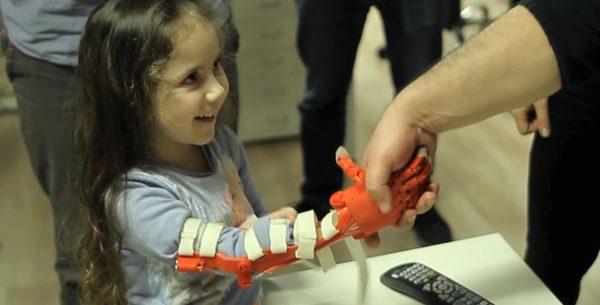 We’ve written a lot about e-NABLE, a vast and inspiring network of volunteers who provide free 3D printed hands to people with missing fingers, hands, or partial lower limb loss. Occasionally through the site’s blog, volunteers from around the world will share their e-NABLE stories, like Amanda Cross did with e-NABLE Ghana. Recently, Zeynep Karagöz, an e-NABLE Turkey volunteer who works for Istanbul-based design team 5 dakika, had an opportunity to share his story about how the chapter got started. He talked about how collaboration between community maker spaces, social media, schools, and robotics clubs can help grow these e-NABLE chapters.
We’ve written a lot about e-NABLE, a vast and inspiring network of volunteers who provide free 3D printed hands to people with missing fingers, hands, or partial lower limb loss. Occasionally through the site’s blog, volunteers from around the world will share their e-NABLE stories, like Amanda Cross did with e-NABLE Ghana. Recently, Zeynep Karagöz, an e-NABLE Turkey volunteer who works for Istanbul-based design team 5 dakika, had an opportunity to share his story about how the chapter got started. He talked about how collaboration between community maker spaces, social media, schools, and robotics clubs can help grow these e-NABLE chapters.
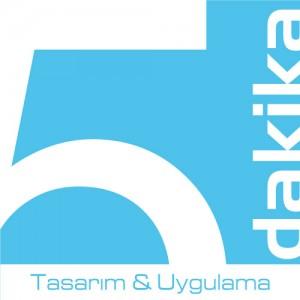 5 dakika, which we’ve written about before, provides consulting services and both hardware and software support. The team practices “Experience Design” services, which means they “design space, objects, processes, tasks and events using interdisciplinary tools,” one of which is 3D printing. They’ve built 3D printers, and used them to print customized design projects and accessories. But they wanted to do more with 3D printing, and see how the technology could help enhance a person’s life. Karagöz said in this journey to facilitate change, they have been most moved by e-NABLE, and wanted to join the meaningful cause of connecting children who needed prosthetic hands with the inexpensive, custom 3D printed mechanical hands e-NABLE is known for.
5 dakika, which we’ve written about before, provides consulting services and both hardware and software support. The team practices “Experience Design” services, which means they “design space, objects, processes, tasks and events using interdisciplinary tools,” one of which is 3D printing. They’ve built 3D printers, and used them to print customized design projects and accessories. But they wanted to do more with 3D printing, and see how the technology could help enhance a person’s life. Karagöz said in this journey to facilitate change, they have been most moved by e-NABLE, and wanted to join the meaningful cause of connecting children who needed prosthetic hands with the inexpensive, custom 3D printed mechanical hands e-NABLE is known for.
In the summer of 2014, Karagöz and the 5 dakika team first contacted e-NABLE. Not only did they want to volunteer their 3D printing skills to make prosthetics for children in need, but they also wanted an opportunity to “explain the advantages of 3D printing in the Turkish community.” They spent some time printing and testing several of the 3D printed e-NABLE models, using different materials, all the while trying to figure out the best way to implement the project in their home country. So they reached out to volunteer Mehmet, who had lost four fingers on his right hand, and starting to adapt the e-NABLE designs to fit the correct dimensions of Mehmet’s hand.
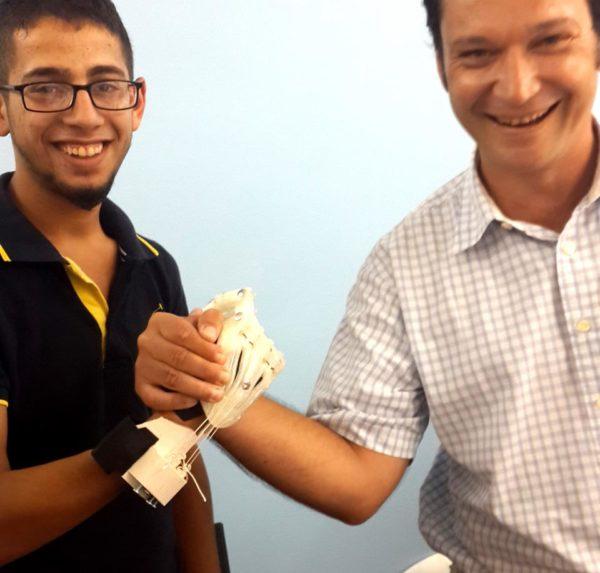 They were soon able to give Mehmet a test hand, equipped with four fingers, and noticed an incredibly quick adaption process from the moment he began using it. Once they had finalized the design of the e-NABLE prosthetic hand, they were able to give him a permanent hand.
They were soon able to give Mehmet a test hand, equipped with four fingers, and noticed an incredibly quick adaption process from the moment he began using it. Once they had finalized the design of the e-NABLE prosthetic hand, they were able to give him a permanent hand.
In his e-NABLE blog post, Karagöz said, “After 7 months from the time of his accident, he was able to use the 3D printed hand for almost any function including riding a bike or playing ball. With Mehmet setting an example, we decided to publish the project in Turkey to help more young people.”
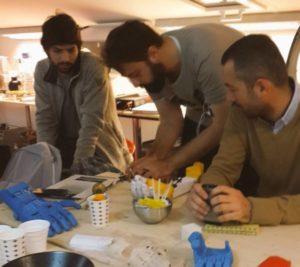 Thus, the Robotel Türkiye Project was born. The team set up a website and shared their experience online, hoping it would be able to spread further in their country once the story was in their native language; Karagöz noted that a possible e-NABLE barrier for Turkey is the language on its website. There was some initial interest once the website was up and running, but they didn’t really hit the ground running until late last year. They received a call from Konya, a city in central Anatolia, about a young boy in need of a prosthetic device. The boy was unable to travel, and they were not able to go to him at the time, so in order to solve the problem locally, they got a little creative. They searched 3D printing forums for two weeks and were able to find several possible e-NABLE volunteers who could take photos and measurements of the boy’s hand, implement the design, and 3D print the hand for him.
Thus, the Robotel Türkiye Project was born. The team set up a website and shared their experience online, hoping it would be able to spread further in their country once the story was in their native language; Karagöz noted that a possible e-NABLE barrier for Turkey is the language on its website. There was some initial interest once the website was up and running, but they didn’t really hit the ground running until late last year. They received a call from Konya, a city in central Anatolia, about a young boy in need of a prosthetic device. The boy was unable to travel, and they were not able to go to him at the time, so in order to solve the problem locally, they got a little creative. They searched 3D printing forums for two weeks and were able to find several possible e-NABLE volunteers who could take photos and measurements of the boy’s hand, implement the design, and 3D print the hand for him.
Since they found this successful solution using social media, Robotel Türkiye started a Facebook page, which turned out to be a really smart idea: in only a week, they hit over 1,000 likes and by now they’re closing in on 3,900! They were invited to share their experience on radio and TV shows, and gave interviews in newspapers and magazines. After each appearance or article, their phones would ring off the hook with requests from all around the country. They received requests in the mail as well, and some people even showed up in person to ask for their help.
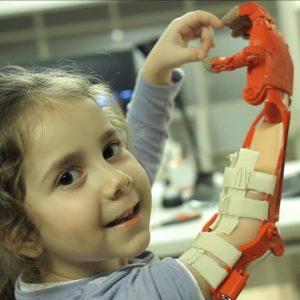 The community grew and grew, with the help of mainstream media, and now Robotel Türkiye has over 240 volunteers working in more than 70 locations throughout Turkey. They have now 3D printed about a dozen e-NABLE prosthetic hands. Several local student communities have contributed to the cause as well, including Istanbul MakerLab, Makers Türkiye, and IEEE Turkey.
The community grew and grew, with the help of mainstream media, and now Robotel Türkiye has over 240 volunteers working in more than 70 locations throughout Turkey. They have now 3D printed about a dozen e-NABLE prosthetic hands. Several local student communities have contributed to the cause as well, including Istanbul MakerLab, Makers Türkiye, and IEEE Turkey.
Karagöz explained, “Robotel Türkiye volunteers meet regularly to inform newcomers, to discuss cases at hand, to distribute workload, to organize training workshops and new opportunities to reach out to more people. The community also shares cases online, trying to answer to calls locally.”
He says that they tell their story wherever they go, organizing and attending events and giving talks about the important work they do and the lives they’ve touched. Their goal is to expand the project in Turkey, by sharing the stories and touching as many lives and hearts as they can.
If you’re interesting in supporting e-NABLE, especially in the more under-served parts of the world like Turkey once was, there are several ways to do so. You can visit their online store, where all items are made by volunteers and 100% of the proceeds support the website and e-NABLE Outreach, the official non-profit group that supports the global e-NABLE chapters. You can also directly gift 3D printers, filament, and other materials to schools in need through the e-NABLE Community Sponsorship Program from MatterHackers. Discuss in the e-NABLE Turkey forum at 3DPB.com.
[Source/Images: e-NABLE]Subscribe to Our Email Newsletter
Stay up-to-date on all the latest news from the 3D printing industry and receive information and offers from third party vendors.
You May Also Like
Profiling a Construction 3D Printing Pioneer: US Army Corps of Engineers’ Megan Kreiger
The world of construction 3D printing is still so new that the true experts can probably be counted on two hands. Among them is Megan Kreiger, Portfolio Manager of Additive...
US Army Corps of Engineers Taps Lincoln Electric & Eaton for Largest 3D Printed US Civil Works Part
The Soo Locks sit on the US-Canadian border, enabling maritime travel between Lake Superior and Lake Huron, from which ships can reach the rest of the Great Lakes. Crafts carrying...
Construction 3D Printing CEO Reflects on Being Female in Construction
Natalie Wadley, CEO of ChangeMaker3D, could hear the words of her daughter sitting next to her resounding in her head. “Mum, MUM, you’ve won!” Wadley had just won the prestigious...
1Print to Commercialize 3D Printed Coastal Resilience Solutions
1Print, a company that specializes in deploying additive construction (AC) for infrastructure projects, has entered an agreement with the University of Miami (UM) to accelerate commercialization of the SEAHIVE shoreline...


